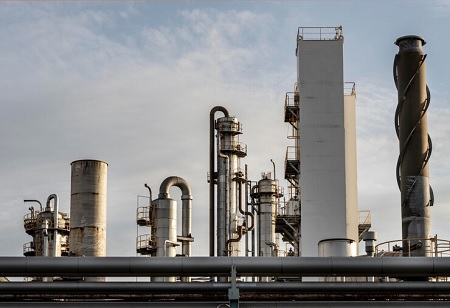
India Develops Pure-Hydrogen-based DRI Tech for Green Steel

 India is exploring the development of a proprietary pure-hydrogen-based DRI (direct reduction of iron) technology for producing green steel. The comprehensive project report for this endeavor is currently undergoing thorough examination across various ministries, as informed by a senior government official familiar with the discussions.
India is exploring the development of a proprietary pure-hydrogen-based DRI (direct reduction of iron) technology for producing green steel. The comprehensive project report for this endeavor is currently undergoing thorough examination across various ministries, as informed by a senior government official familiar with the discussions.
Industrial-scale hydrogen-iron production, commonly referred to as direct reduction of iron (DRI) with hydrogen, involves the removal of oxygen from iron ore. Instead of relying on high carbon-emitting fossil fuels, hydrogen is utilized in the process, with the resultant waste gas being eliminated as water. The resulting DRI, also known as sponge iron, is subsequently introduced into an electric arc furnace, where electrodes generate a current for steel production.
"This technology is still developing and some of the ministries such as steel and MNRE and industry players like integrated steel makers and secondary steel-makers, are working together to get the pilots going on-ground", the official said, requesting anonymity. "It's an ambitious project", the official added.
Insiders familiar with the discussions indicate that a pilot plant utilizing pure hydrogen-based DRI production is being proposed in a collaborative effort referred to as "consortium mode". This initiative entails the involvement of integrated steel companies, secondary stakeholders, and CSIR Lab (Council for Scientific & Industrial Research) for both the technology development and essential intellectual property aspects. "The Scheme was approved by MNRE (Ministry of New and Renewable Energy) last month", the official said.
Hydrogen extraction can be achieved from hydrogen-rich fuels like natural gas and biogas, as well as from water through electrolysis. Presently, the predominant source of hydrogen production is natural gas, contributing approximately three-quarters of the annual global dedicated hydrogen production, estimated at around 70 million tonnes. Currently, water electrolysis accounts for less than 0.1 percent of global dedicated hydrogen production.
Up to this point, India has embraced two main methods of utilizing hydrogen in steel production. The initial method entails injecting hydrogen into the tuyeres of blast furnaces, which are nozzles responsible for directing air into the smelter or furnace. This injection serves as a partial replacement for the pulverized coal injection (PCI) process.
"These two options can be deployed on a pilot scale in some units in India with partial support from the National Green Hydrogen Mission both in terms of capital grants and subsidized green hydrogen availability," the official said adding advertisement for the selection of the participants under the more popular two modes will be issued soon.